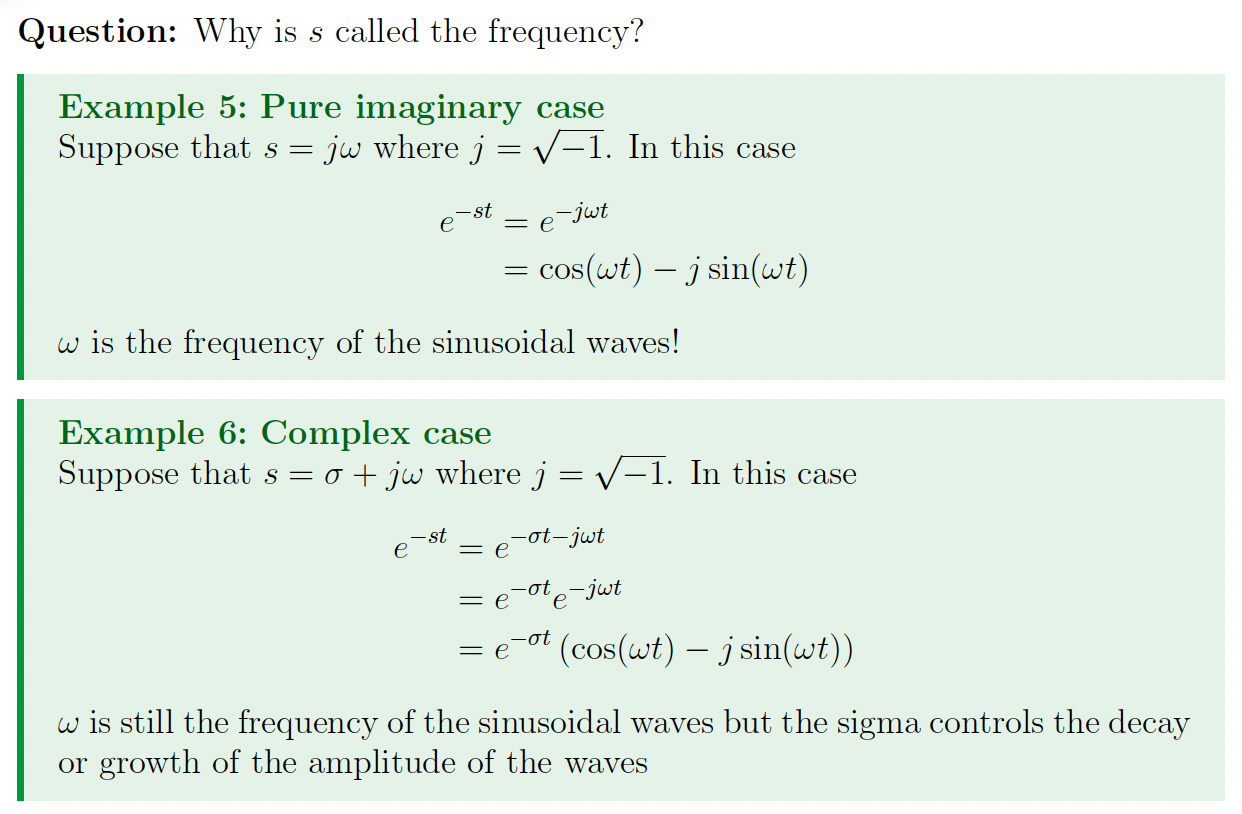Laplace Transform
Given a function , the Laplace Transform of denoted by (given that the integral exists) is defined by
- is a complex parameter called the frequency
Why is
scalled the frequency?In , the term relates to angular frequency in radians per second.
The teacher gives these two examples:

Laplace Transforms of common functions:
Properties of Laplace Transform
Theorem 1
For any function , the one-sided Laplace transform will always converge for some that is sufficiently large.
Theorem 2: Laplace Transform is Linear
Suppose that and have Laplace transforms and . Then for all
the the ROC is the intersection of the ROCs for and .
Theorem 3: Time-Scaling
If then for
Theorem 4: Exponential Modulation
Theorem 5: Time-Shifting
If and then
Theorem 6: Multiplication by
tIf then
Theorem 7: Laplace Transform of a Derivative/Integral
Let be such that there is a real value α such that the integral
converge and such that there exists a function such that for
and there exists a real value such that
converges. In this case or in other-words
- We can use this theorem to solve linear ODEs!